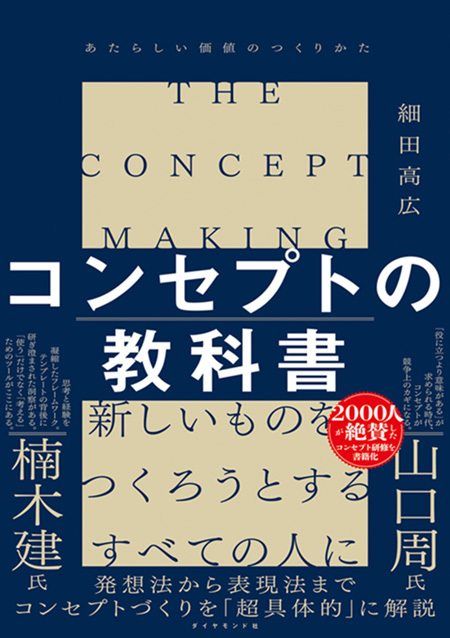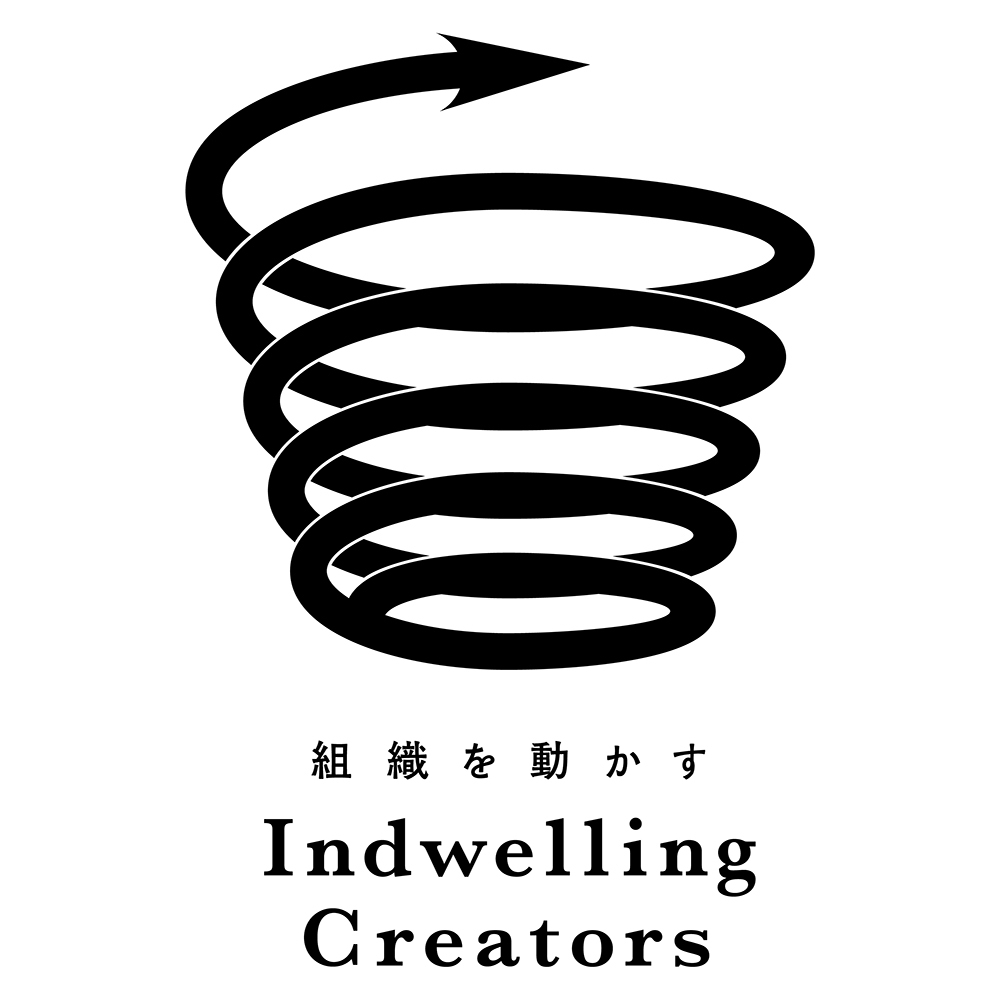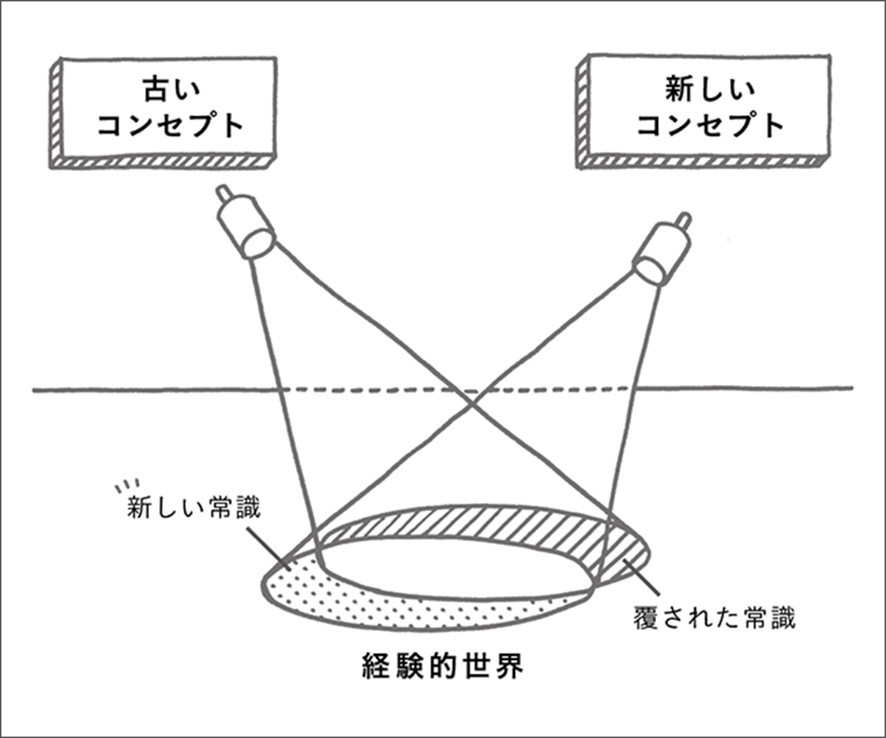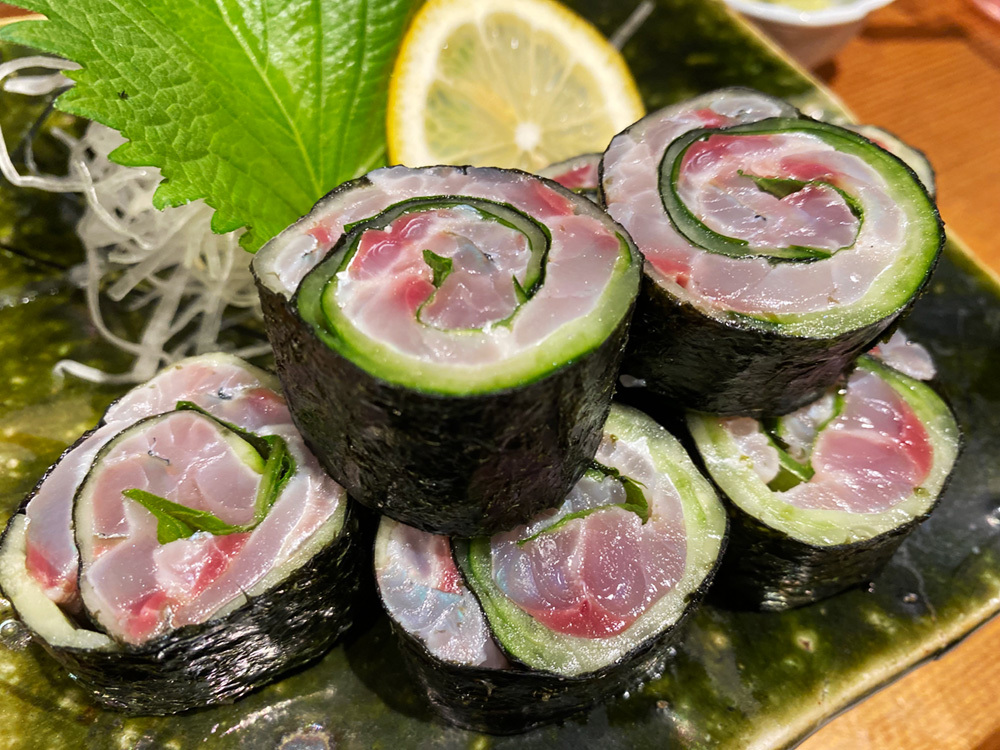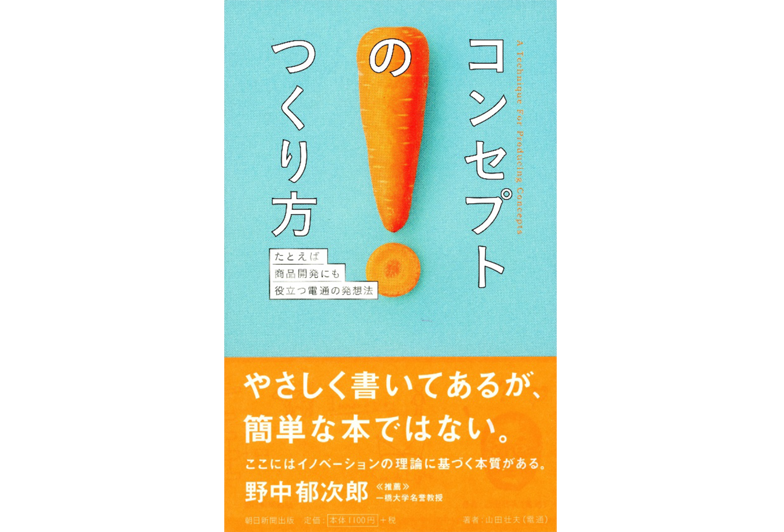After hearing positive reviews from colleagues and students, I read Takahiro Hosoda's book, "The Concept Textbook: How to Create New Value."
The opening remark, "I couldn't find a learning system universally applicable across various business scenarios. I desperately searched for a textbook that could teach the fundamentals of concepts in a single volume—and that search was led by none other than myself," was a bit harsh from my perspective as the author of "The Idea Textbook" and "How to Create Concepts." Yet, I understood why it sparked discussion.
The book's greatest strength is that it's a practical guide you can immediately put into action. From famous examples like Starbucks (the "third place") to lesser-known cases, it meticulously explains concrete methods for generating outstanding concepts, all illustrated with rich anecdotes.
For instance, regarding techniques for "condensing concepts into a single line (key phrase)":
"From a station you pass through to a station where people gather" (JR East's ECUTE business) uses "transformative language,"
"Clothes that don't need seasonal changes" (a training case study) using the "elimination of negatives" method,
"Flying buses" (Southwest Airlines) using the "metaphor method,"
along with other approaches like the "reversal method" and "contradiction method," totaling 10 fundamental structures.
Practitioners struggling with concept creation can stimulate their thinking and move forward by trying each of these one by one.
Another aspect of this book that resonated with me is its refusal to organize the concept creation phase into linear steps like "① Insight → ② Problem Identification → ③ Discovery → ④ Articulation." Instead, it simply presents a pyramid-shaped framework of "six blank spaces," stating, "You can start thinking from anywhere."
While practitioners might find a step-by-step process convenient for direct application to work plans, concept creation is fundamentally a series of intense, "here and now" battles. Its essence lies precisely in the fact that it defies rigid time management, like "let's finish this in two weeks." ( See past articles for details ) This book conveys a determination to challenge the core essence, not just offer simplistic how-to advice.
Incidentally, in our service "Indwelling Creators" for transforming organizations where innovation stalls, concept creation occupies an extremely important part. And in that process, we view concepts as something to be "nurtured." They serve as signposts in a dynamic process that increases the resolution of an unseen future.
In practice, we prioritize concepts like the "flying bus" – what this book would classify as the "metaphor method" type. Realities that don't yet exist in this world can only be expressed through parables like metaphors. And through this,
① Old conventions to overturn (conventional airline services)
② A direction intuitively shared with colleagues toward an unseen future ("A bus-like service is perfectly fine!")
③ The numbers made visible through customer creation (the reasons why that business plan will sell, win, and profit)
are all encompassed.
On the other hand, we exercise caution with "transformative narratives" like "From a station you pass through to a station where people gather" (JR East's ECUTE project), while acknowledging its proven effectiveness in actual business. This is because such narratives sometimes clearly identify the outdated convention to overturn (the transit station), but the actual implementation—the direction pointed to by the unseen future of the "gathering station" (transcending a mere "station building") and the numbers revealed by that customer creation—can be thin.
The same applies to "methods for eliminating negatives," like "clothes that don't need seasonal changes." They may still be merely "Not Old Searchlights," potentially leaving the unique direction they aim to achieve ambiguous. Of course, it might function on its own. But with "transformative narratives" or "problem-solving methods," even after temporarily setting them aside, I persistently, persistently refine them. I keep searching for that "one phrase" (≈ metaphor) that allows me to share a new direction with my team and see the numbers that can be reflected in the business plan.
The reason is simple: a concept isn't just fancy rhetoric to decorate a proposal document that's "done once written." It's something that must be used. It's part of the eternal dialogue surrounding people, things, and events. To borrow the words of its author, Mr. Hosoda, it must answer the fundamental business question: "What are we creating, and for whom?" Moreover, it must transcend mere internal proposals for products or business plans; it must become the "strategy" itself, transformed into a business plan that drives action and faces the harsh realities of the market.
In any case, it's truly puzzling that despite so many people using the term "concept" daily, there are few opportunities to discuss its true essence. "The Concept Textbook: Creating New Value" is a recommended book that provides us with just such an opportunity.
Well, well.
The hot days continue. Reading such a fiery book makes you thirsty. Times like that call for a little trip out to Boso, a glass of draft beer at a kappo restaurant. Then, with vinegar-marinated horse mackerel sushi rolls as a snack, a cold sip of the local sake "Koshikoi." Ahh, revived!
This is my secret "third place," known only to me.
Please, enjoy!


